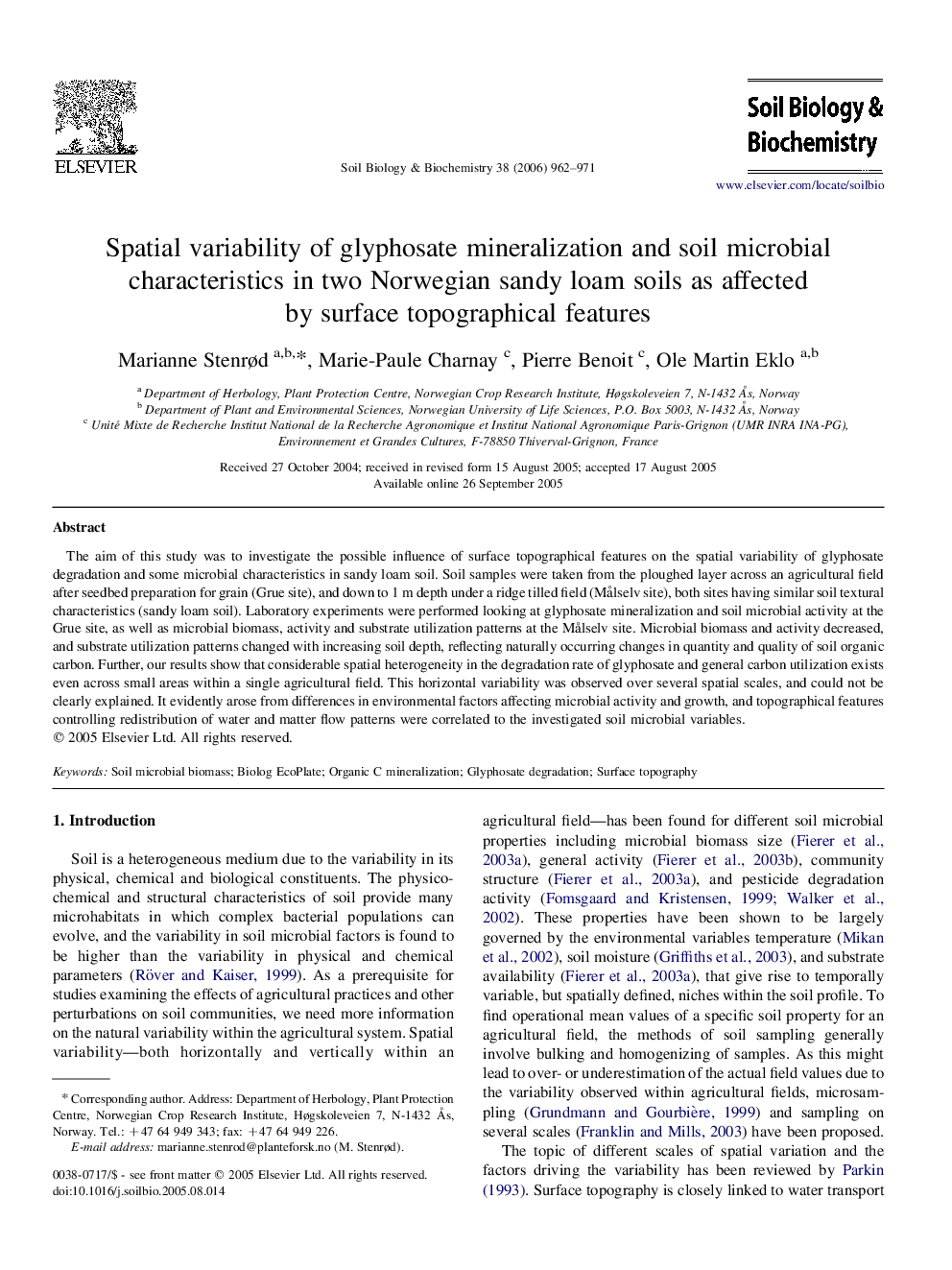| Article ID | Journal | Published Year | Pages | File Type |
|---|---|---|---|---|
| 2026326 | Soil Biology and Biochemistry | 2006 | 10 Pages |
The aim of this study was to investigate the possible influence of surface topographical features on the spatial variability of glyphosate degradation and some microbial characteristics in sandy loam soil. Soil samples were taken from the ploughed layer across an agricultural field after seedbed preparation for grain (Grue site), and down to 1 m depth under a ridge tilled field (Målselv site), both sites having similar soil textural characteristics (sandy loam soil). Laboratory experiments were performed looking at glyphosate mineralization and soil microbial activity at the Grue site, as well as microbial biomass, activity and substrate utilization patterns at the Målselv site. Microbial biomass and activity decreased, and substrate utilization patterns changed with increasing soil depth, reflecting naturally occurring changes in quantity and quality of soil organic carbon. Further, our results show that considerable spatial heterogeneity in the degradation rate of glyphosate and general carbon utilization exists even across small areas within a single agricultural field. This horizontal variability was observed over several spatial scales, and could not be clearly explained. It evidently arose from differences in environmental factors affecting microbial activity and growth, and topographical features controlling redistribution of water and matter flow patterns were correlated to the investigated soil microbial variables.
